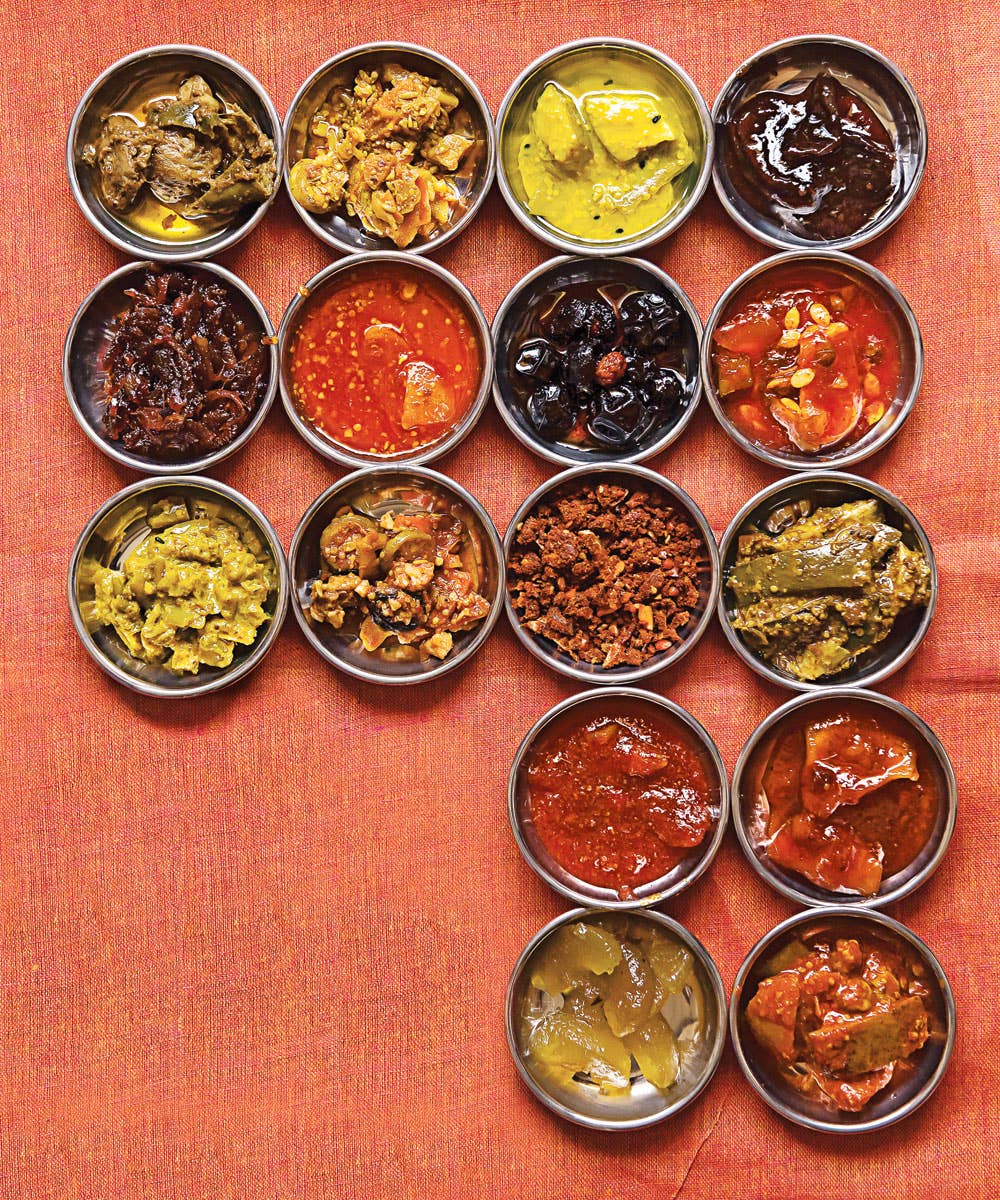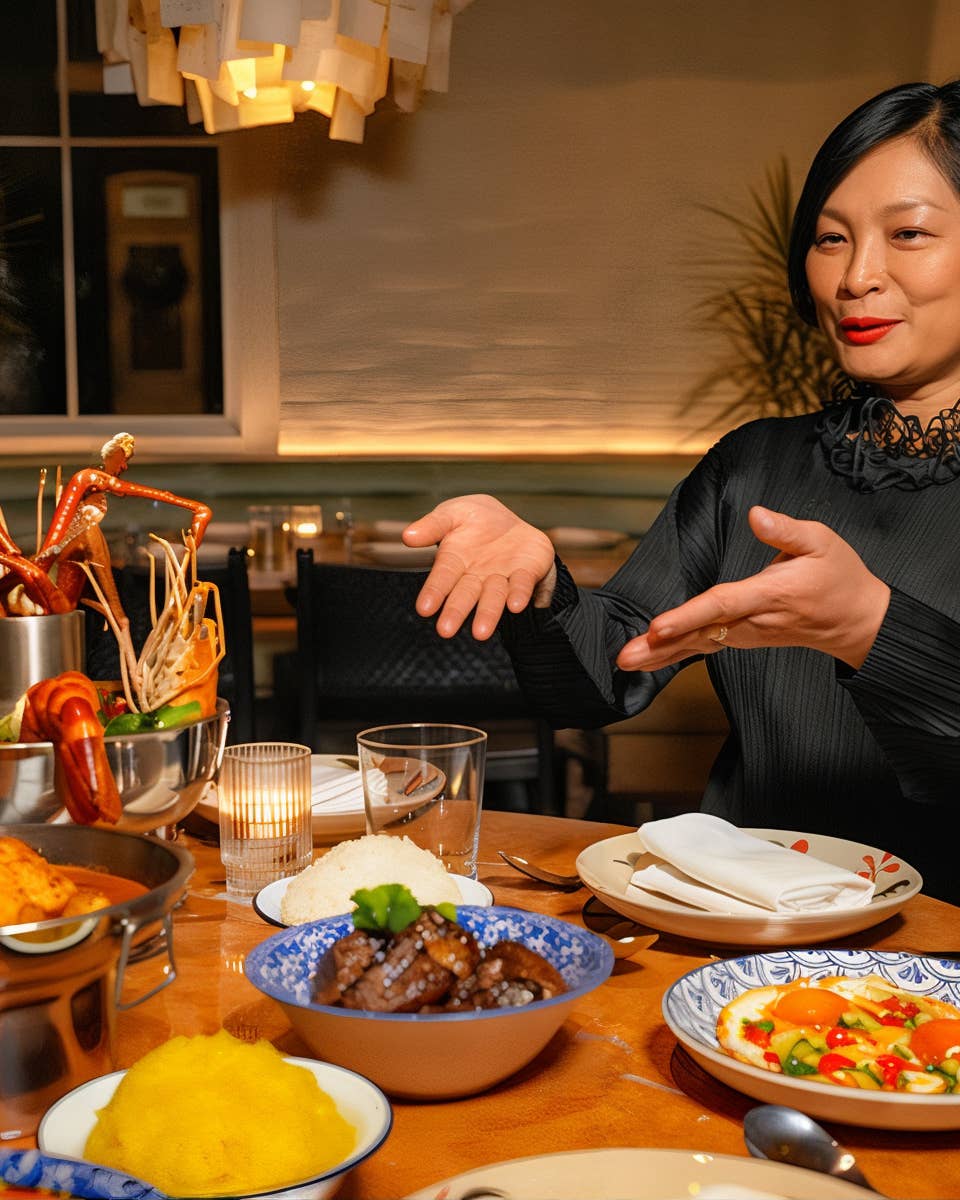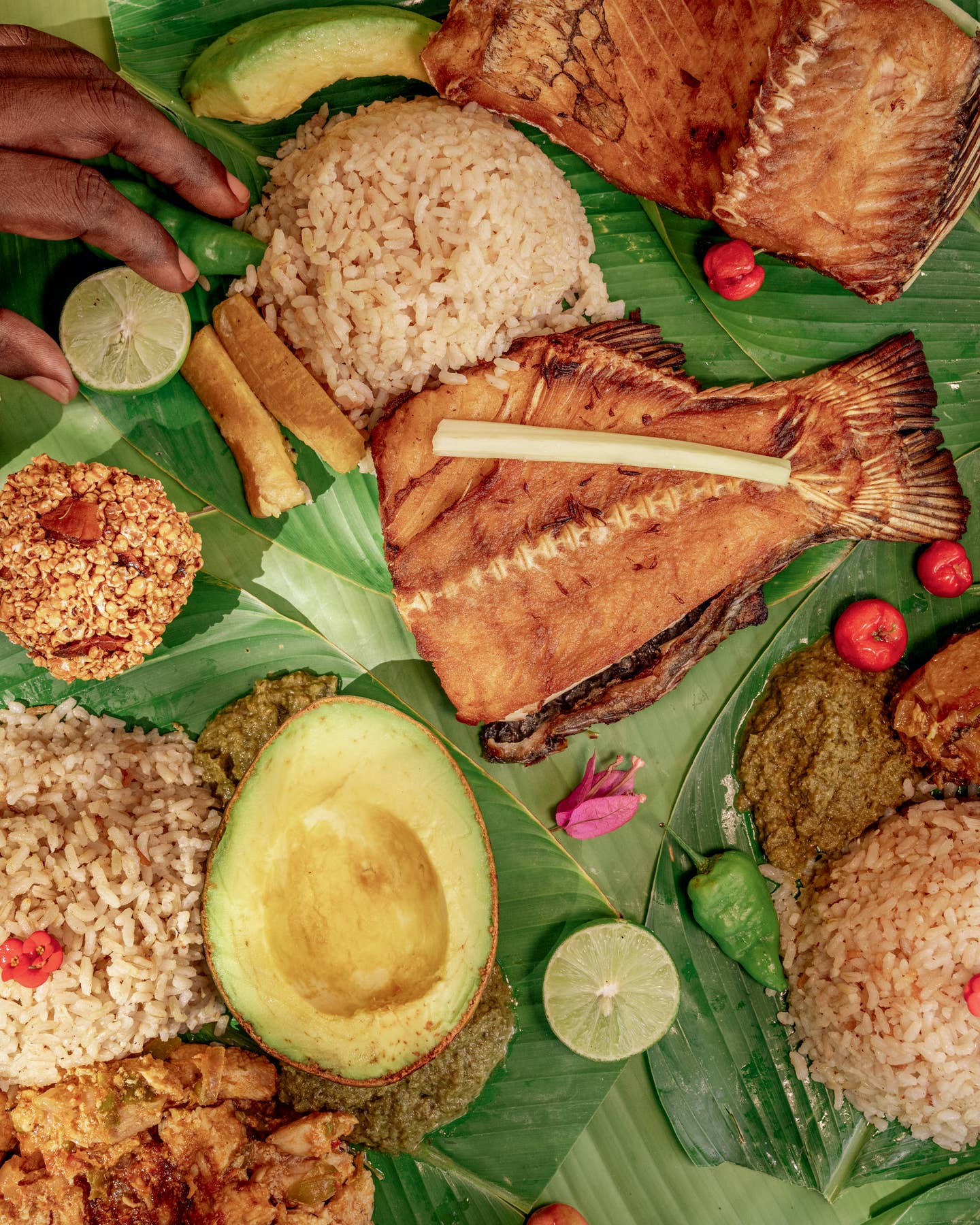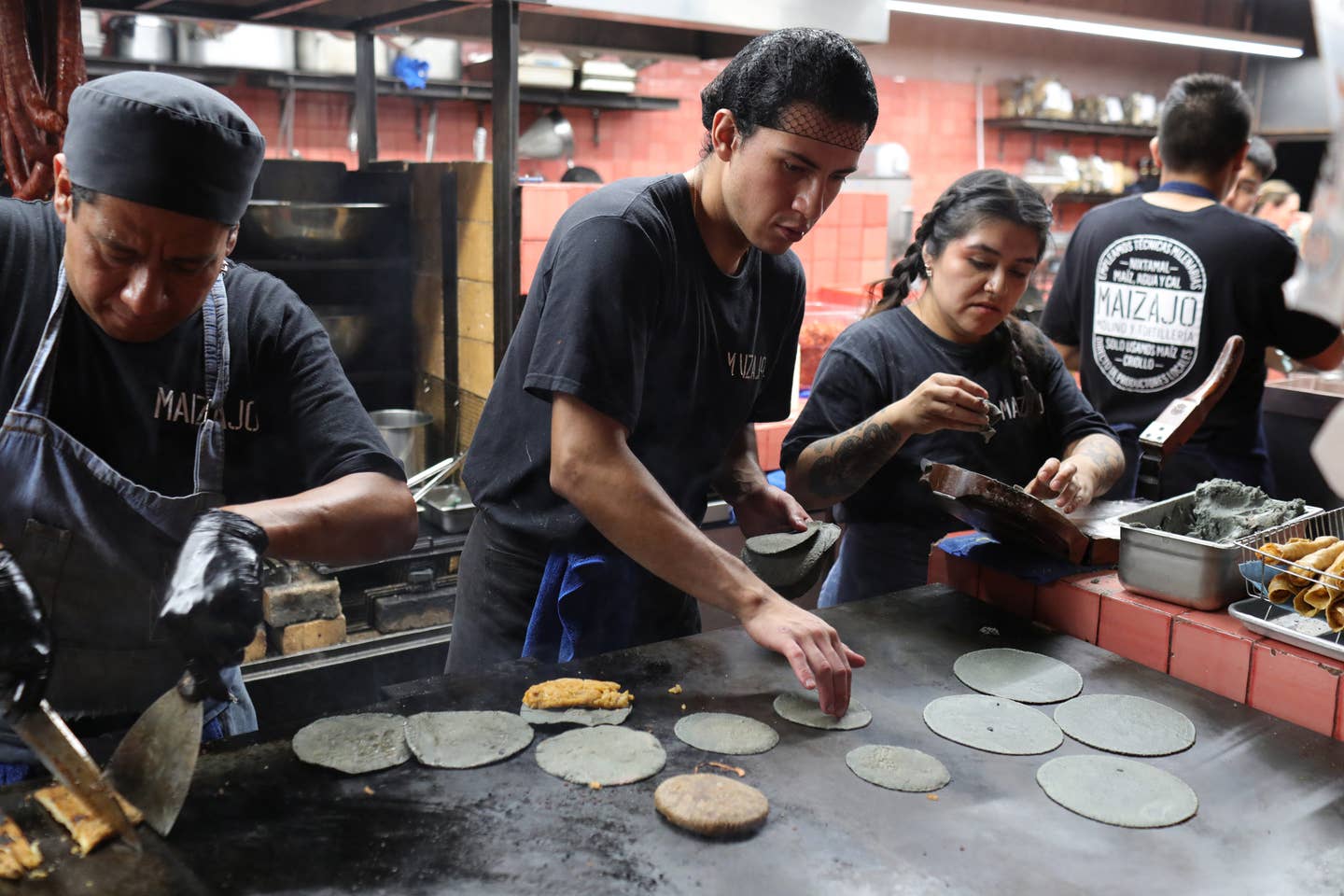
When I go home to India, I look forward to one thing in particular: my mother's homemade pickles. As is true of most great Indian cooks, her repertoire is seemingly endless. With yellow dal, she might serve a lime version, fantastically sour and peppy with green chiles and ginger. To slather on flaky paratha flatbreads, she could make a quick pickle of green mango simmered with cardamom and clove. And I always ask for her sun-cured green mango pickle; fragrant with curry leaves, it's delicious alongside her appams, crispy rice-flour crêpes. When she pickles, my mother is undertaking one of India's most ancient and universal methods of preservation. Everywhere, fruits and vegetables are salted, sun-cured, and then bottled in spice-infused oil, where their flavor intensifies, transforming into condiments that perk up meals. There is generally one fine cook, like my mom, who will pickle for her entire clan. But markets also offer a wide array—fig and date pickle (top row, far right), chile-spiked mixed vegetables (third row, second from right), spicy lemon pickle, and more—displayed in big glass jars. As I see it, these pickles safeguard far more than just seasonal produce. They preserve our heritage.
See the recipe for Nimbu-Ka Achar (Spicy Lemon Pickle) »
See the recipe for Aamba Khatta (Quick Green Mango Pickle) »
Smita Chandra is the author of_Cuisines of India _(Ecco Press, 2001)
Keep Reading
Continue to Next Story










